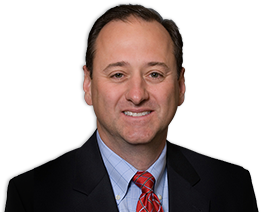Thoracic Spine Decompression
Thoracic spine decompression is a procedure to relieve pressure on the spinal nerves in the middle portion of the back. Spine decompression surgery is indicated in treating spinal stenosis. Spinal stenosis is the narrowing of the spinal canal caused by degeneration of the facet joints and the thickening of the ligaments. These thickened ligaments narrow the spinal canal and compress the nerves causing chronic pain, numbness and tingling sensation or weakness in your arms or legs. Thoracic decompressive surgery is recommended when your pain is not relieved with conservative treatments such as physical therapy or medications.
The following are common techniques for decompression:
- Laminectomy: During a laminectomy the entire lamina, a part of the enlarged facet joints and the thickened ligaments are removed to relieve pressure.
- Laminotomy: During a laminotomy, just a section of the lamina and ligament is removed.
- Foraminotomy: A foraminotomy is increasing the space where the spinal nerve roots leave your spinal canal to avoid compression.
- Laminoplasty: Laminoplasty is a surgical procedure indicated in conditions such as cervical spinal stenosis to relieve the pressure off the spinal canal by increasing the space within the spinal canal. This is achieved by creating a hinge on one side of vertebrae and cutting a portion of vertebrae on another side. This form the swinging vertebrae and the portions or vertebrae are held in place using small wedges. These spacers are then held in place using tiny plates and secured with screws. This widens the space of the spinal canal and relieves the pressure off the spinal cord.
These surgeries are performed under general anesthesia and your surgeon makes an incision down the middle of your back and the muscles overlying the vertebrae are spilt and moved to the side exposing the lamina of the vertebra. The lamina is the bone that makes the back of the spinal canal and forms a protective roof over the back of the spinal cord. Then the entire bony lamina and ligament is removed (laminectomy). In some cases, only a small opening of the lamina is made by removing bone of the lamina above and below the spinal nerves to relieve compression (laminotomy). Next, to remove the bone spurs and the thickened ligament the protective sac of the spinal cord and the nerve root are retracted. Then the facet joints are trimmed to create more space for the nerve roots. If compression is caused from a slipped disc, your surgeon will perform a discectomy- the removal of a portion of a slipped disc.
This surgery makes the spine unstable and therefore another procedure, spinal fusion, is performed to stabilize the spine. Spinal fusion uses bone grafts, rods, plates or screws to join two separate vertebrae in the spine.











